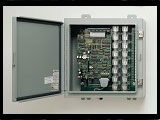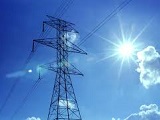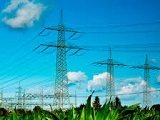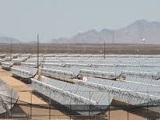
Remote Terminal Units, PLCs, Protocol Analyzers, & Protocol Converters for the Power Industry

The Visionary line of mini and micro RTUs provide remote monitoring and control functions for poletop and small substation SCADA applications. Each of our RTUs can also operate as a stand-alone programmable logic controller. Along with our protocol converter, all of our products combine feature-rich hardware designs with user-friendly, intuitive software to give the technician in the field powerful tools to meet any requirement with pushbutton simplicity. And, with the ability to be configured with any of 8 widely used industry standard protocols, these units are capable of being seamlessly integrated into a wide variety of SCADA systems.
FEATURES
- Ethernet and RS-232 Ports
- Compact Design
- Protocol Conversion for Local IED’s
- Keep Running History
- Read AC or DC Analogs
- Low Cost
INTUITIVE CONFIGURATION SOFTWARE
Each product comes with a free copy of the VisiCal software suite which allows the user to configure, calibrate, or scan the unit, and:
- Utilize the Integrated Protocol Analyzer
- Define Local IED’s
- Retrieve Historical Data
- Program a PLC Function
PROTOCOLS
- DNP 3.0
- DNP over TCP/IP
- DNP over UDP
- Modbus RTU
- Modbus over IP
- PG&E (Data 2179)
- Telegyr 8979
- CDC Type I / II

Applications
We strive to offer products that have maximum flexibility and adaptability and, at the same time, take minimum effort to install, configure, and maintain.
The use of Remote Terminal Units (RTUs) provides a consistent interface to a variety of equipment from a number of manufacturers. This simplifies the training requirements of staff to install and operate equipment in today’s complex electric utility environment.
Some of the general purpose devices our RTUs are being used with include relays, reclosers, capacitor banks, motor operated switches, distribution transformers, and voltage & current sensors. In addition to these, we have developed a number of special applications for our customers that give a wider variety of applications. This has included reading sensors, meters, and even a weather station and reconfiguring the data so it can be sent back to a SCADA hub in its native protocol.
In another application, we programmed RTUs to scan remote reclosers at programmable intervals looking for event files. When an event file is found, the RTU downloads it into its own buffer, encases it in a DNP wrapper and transfers it to the SCADA hub when it receives the appropriate read command. Once it is received at the hub the original event file is reconstructed from the DNP response. The event file is then transferred over a secure, encrypted link to the corporate LAN, where it is available for the engineering staff to analyze.
In yet another project we programmed our RTUs to be used in a demand response application where the utility uses the radio and satellite links of their SCADA systems to directly communicate with customers’ energy management systems (EMSs) to shed load during peak loading emergencies. This entailed developing a computer program that allows the utility to schedule load shedding events.
For this project we designed a server that resides at the SCADA hub. The server receives commands from the program over the corporate LAN and translates them into SCADA commands that are then sent over radios and satellite links to the customers sites.
At the customers’ sites the SCADA commands are further translated into XML commands to tell the EMS’s to shed load. The EMSs have been pre-programmed by the customer to shed load in a particular way depending on the severity level of the command received.
And finally, we have a network of RTUs that are being used to monitor the health of an 8,000 square-mile aquifer in Texas. These units measure the amount of water being extracted at each remote wellhead. They keep an 18 month record of the activity at the site and because they are solar powered, put the site into a low-power mode if they determine the battery is getting low.
Whether your application is typical or esoteric, we have the ability and experience to deliver a solution that is both cost-effective and successful.








